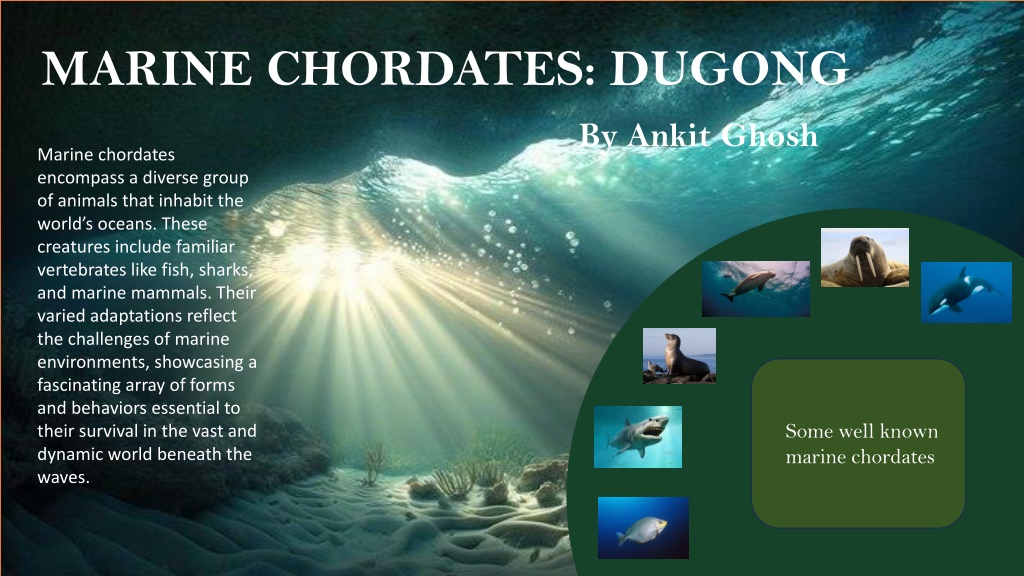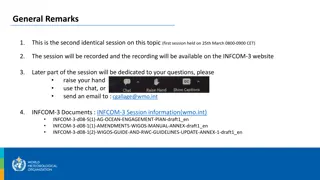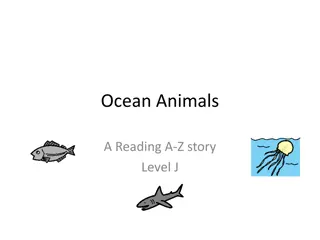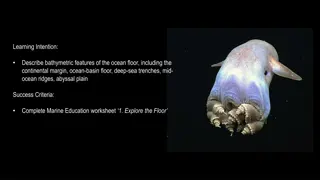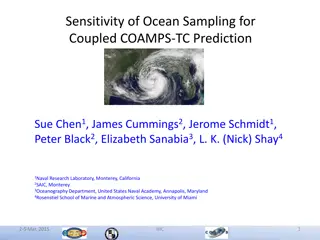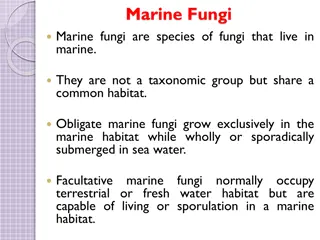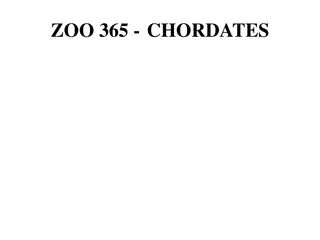Understanding Dugongs: Marine Chordates of the Ocean
Dugongs, known as sea cows, are fascinating marine chordates with a broad but fragmented range in tropical waters. They exhibit social behaviors, communicate through echoing sounds, and are herbivorous grazers feeding on seagrasses. Breeding season rituals involve courtship behaviors like vocalizations and physical contact. Their feeding habits are sustainable, tied to the availability of seagrass beds. Dugongs possess unique adaptations for survival in marine environments.
Download Presentation

Please find below an Image/Link to download the presentation.
The content on the website is provided AS IS for your information and personal use only. It may not be sold, licensed, or shared on other websites without obtaining consent from the author. Download presentation by click this link. If you encounter any issues during the download, it is possible that the publisher has removed the file from their server.
E N D
Presentation Transcript
MARINE CHORDATES: DUGONG Marine chordates encompass a diverse group of animals that inhabit the world s oceans. These creatures include familiar vertebrates like fish, sharks, and marine mammals. Their varied adaptations reflect the challenges of marine environments, showcasing a fascinating array of forms and behaviors essential to their survival in the vast and dynamic world beneath the waves. By Ankit Ghosh Some well known marine chordates
DUGONGS Scientific name: Dugong dugon Common name: Sea cows Systematic position (Acc. To J.Z. Young, 1981) Kingdom: Animalia Phylum: Chordata Subphylum: Vertebrata Class: Mammalia Order: Sirenia Family: Dugongidae Genus: Dugong Species: Dugon Dugongs (Dugong dugon), also known as sea cows, have a broad but fragmented range, encompassing tropical waters from East Africa to Vanuatu, about 26 degrees both north and south of the equator.
General behaviour of Dugongs Social behaviour They are social animals, often found in small groups. They can also be solitary sometimes. Larger gatherings can occur in areas with abundant food. Communication Dugongs constantly communicate with each other through a series of echoing chirps, whistles and barks. Underwater behaviours Exhibit slow and graceful swimming. They can stay underwater for 6 minutes straight before surfacing. Sometimes they breathe by standing on their tail with their head above water. Migration Dugongs are not considered migratory but are known to travel great distances within their range in order to find food.
Feeding behaviour of Dugongs Herbivorous Diet: Dugongs primarily feed on seagrasses, consuming large quantities daily. Their diet consists mainly of seagrass species, and they use their strong, muscular lips to uproot seagrass from the ocean floor. Slow Grazing: Dugongs are slow and deliberate grazers, moving along the ocean floor while feeding. They use their sensitive upper lip to detect and grasp seagrass, and their feeding behavior often leaves distinct feeding trails on the seabed. Efficient Digestive System: Dugongs have a large, multi-chambered stomach and a hindgut fermentation system, allowing them to efficiently break down the tough cellulose in seagrasses. Seasonal Migration for Feeding: Dugongs may undertake seasonal migrations to follow the availability of seagrass. Their feeding habits are closely tied to the distribution of seagrass beds, and these migrations ensure a sustainable supply of their primary food source.
Breeding habits of Dugongs Breeding Season: Dugongs typically have a specific breeding season, which varies by location. In some areas, it may coincide with seasonal changes or the availability of seagrass, a primary component of their diet. During this time, male dugongs actively seek out females for mating. Mating Behavior: Dugongs, marine mammals closely related to manatees, engage in courtship rituals during the breeding season. These rituals often involve complex vocalizations, body movements, and physical contact between male and female dugongs. Gestation Period: After successful mating, female dugongs have a gestation period of around 13 to 15 months, making it one of the longest gestation periods among marine mammals. This extended period allows for the development of a single calf. Mother-Calf Bond: Dugong calves are born underwater and are relatively independent, able to swim and surface for air shortly after birth. However, they maintain a close bond with their mothers, relying on them for nourishment and protection.
ACKNOWLEDGEMENT In the accomplishment of completion of my project on the dugongs, I would like to convey my special gratitude to the respected professors of Department of Zoology, Bangabasi Morning College. Their valuable guidance and suggestions helped me in various phases of the completion of this project. I will always be thankful to them in this regard. Informations compiled and presented by, Ankit Ghosh B.Sc(H)(Sem III), Dept of Zoology Bangabasi Morning College C.U. roll no: 223144-21-0010 C.U. Regn. No: 144-1111-0277-22
